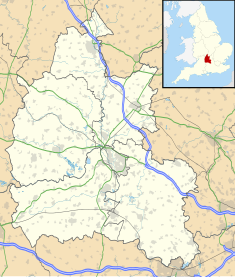| Ditchley Park | |
|---|---|
 | |
| Type | House |
| Location | Charlbury, Oxfordshire |
| Coordinates | 51°53′16″N 1°26′04″W / 51.8879°N 1.4344°W |
| Built | 1720 |
| Architect | James Gibbs exterior / William Kent, Henry Flitcroft interiors |
| Architectural style(s) | Palladian |
| Governing body | Ditchley Foundation |
Listed Building – Grade I | |
| Official name | Ditchley House Including flanking pavilions |
| Designated | 27 August 1957 |
| Reference no. | 1251422 |
Listed Building – Grade II* | |
| Official name | Rotunda 600M NW of Ditchley House |
| Designated | 27 August 1957 |
| Reference no. | 1251530 |
Listed Building – Grade II | |
| Official name | Entrance Screen, gates and balustrading to forecourt of Ditchley House |
| Designated | 30 August 1988 |
| Reference no. | 1262725 |
Listed Building – Grade II | |
| Official name | Steps and flanking statuary 20M NW of Ditchley House |
| Designated | 30 August 1988 |
| Reference no. | 1262763 |
| Official name | Ditchley Park |
| Designated | 1 June 1984 |
| Reference no. | 1000463 |
Ditchley Park is a country house near Charlbury in Oxfordshire, England. The estate was once the site of a Roman villa. Later it became a royal hunting ground, and then the property of Sir Henry Lee of Ditchley. The 2nd Earl of Lichfield built the present house, designed by James Gibbs, in 1722. In 1933, the house was bought by an MP, Ronald Tree, whose wife Nancy Lancaster redecorated it in partnership with Sibyl Colefax. During the Second World War Winston Churchill used the house as a weekend retreat, due to concerns that his official country house, Chequers and his private country home, Chartwell, were vulnerable to enemy attack. After the war, Tree sold the house and estate to the 7th Earl of Wilton, who then sold it in 1953 to Sir David Wills of the Wills tobacco family. Wills established the Ditchley Foundation for the promotion of international relations and subsequently donated the house to the governing trust.
Ditchley is a Grade I listed building. The park is listed Grade II*.
